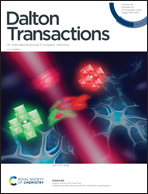Controllable synthesis of CoFeMo layered double hydroxide nanoarrays for promoting the oxygen evolution reaction†
Abstract
Exploiting environmentally friendly and relatively low toxic oxygen evolution reaction (OER) electrocatalysts to improve water oxidation is still one of the biggest difficulties at the moment for overall water splitting. In this work, molybdenum-doped cobalt iron layered double hydroxide (CoFeMo LDH) nanorods are in situ grown on nickel foam (NF) for the first time using a typical and feasible hydrothermal approach. When the CoFeMo LDH/NF sample acts as an electrocatalyst, it presents superior OER performance, requiring small overpotentials of only 240 and 350 mV at 100 and 500 mA cm−2 with a low Tafel slope of 82.8 mV dec−1 in an alkaline medium. Additionally, the combination of Mo doping and CoFe LDH results in the enhanced conductivity of the material. The density functional theory calculation and experimental results prove that the electronic structure tailoring, abundant active sites and the existence of crystalline–amorphous phase boundaries can result in the high catalytic activity of the material. This work presents a novel and feasible approach to design highly efficient and robust catalysts based on advanced LDH-based materials for OER electrocatalysis.



 Please wait while we load your content...
Please wait while we load your content...